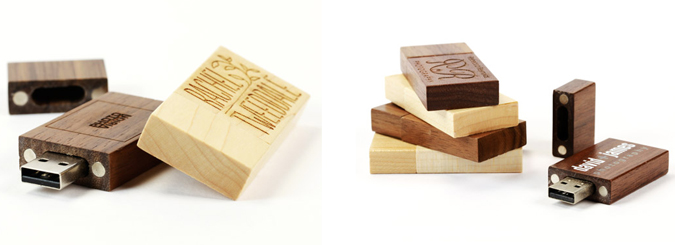Professional Photographers - USB Lambs to the Slaughter
With more and more professional photographers taking the plunge and abandoning CD’s and DVD’s in favour of branded USB memory sticks the challenge for them is to make sure they get a product that is fit for purpose.
It’s far too simplistic to just take to the web, punch in the term “branded USB sticks” into a search engine, select a few suppliers, get quotes from them and go with the cheapest quote.
The problem with this approach is that the vast majority of printed (or engraved) USB stick suppliers are principally supplying products that are designed for the promotional sector – in other words whilst they may look great the core components of the USB sticks are usually towards the bottom end of the speed and reliability curve.
As a professional photographer when you’re looking to buy a PC or Mac you don’t just look at the outer case and make a buying decision based on how pretty it looks, you quite rightly want to know how much memory it’s got, how much RAM it has, what graphics card it has, whether it has a decent processor and what storage the HDD has.
When you’re buying printed USB sticks that will carry your brand on you need to adopt the same approach to buying them as you would to buying a new PC or Mac – don’t just think about the outer case (the outer shell of the USB stick), make sure the internal components are going to be up to the job.
Inside a USB stick are three key element; the flash memory, the controller chip and the capacitor. The quality and grade of all of these can vary. Some are branded (Hynix, Samsung, Toshiba) others are cheaper OEM products – these components will determine the read/write speed of the USB stick, the reliability of the USB stick and ultimately how long it will last (the number of read/write cycles it can support before it fails)
If you buy on price and price alone then typically you’ll end up with a USB stick that was designed to support the general promotional sector: OEM flash, OEM controller and cheap capacitor. Hopefully all Grade A, but often (despite promises to the contrary) they will be Grade B recycled components.
They’ll more often than not work and they’ll be fine for a few small PDF’s but put them under any pressure with lots of large image files or videos and you’ll soon notice that they start to fail at an alarming rate – tell tale signs are images that break up, images that have lines across them, videos that won’t load or run or images that look as though they saved OK but aren’t there when you re-insert the USB stick.
The only way to avoid these problems and is adopt the right mindset when you start the buying process:
- Don’t necessarily buy the cheapest USB sticks you can find. There’s normally a reason why they are so cheap.
- Buy from a local supplier that has a strong reputation (ask other photographers for their views and recommendations)
- Make sure you have guarantees for any purchase you make – 5 years should be the minimum.
- Try and get a clear statement about what memory and controller will be inside any USB drives you buy.
- Specify faster read/write speeds – promotional versions tend to have slow read/write speeds.
- Think about upgrading to USB 3.0 – this will guarantee you a high performance product but do expect to pay a higher price. Also bear in mind that most of your customers won’t have a PC that is USB 3.0 enabled so they won’t see any real performance improvements.
Do all of this whilst at the same time educating yourself about exactly what a USB stick is and you won’t become another photographer that has a difficult first foray into the USB market.

